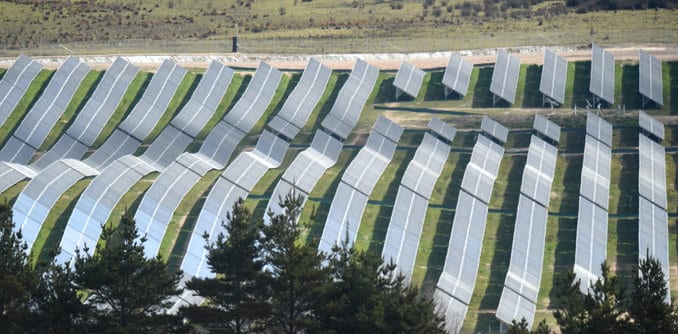Australia still does not have a significant amount of utility-scale solar installed on a global scale, but its rapid short-term growth has already been enough to drive costs down faster than even the most optimistic project developers could have predicted.
Canadian Solar, one of the top five solar module manufacturers in the world, and a major project developer, last year predicted that the levellised cost of large-scale solar in Australia would fall by half from around $150/MWh in 2015 to $75/MWh in 2020.

This cost fall was likely to be helped by lower cost of finance, improvements in technology and capacity factors, and more efficient installation and operation.
But a range of initiatives, supported by the ACT government, the Australian Renewable Energy and the Clean Energy Finance Corporation, mean those achievements are happening more rapidly than expected.
Daniel Ruoss, the head of projects for Canadian Solar says Australia is now likely to reach that target by 2018.

His predictions appear to confirm the assessment of ACT energy minister Simon Corbell, who admits being taken aback by the prices offered in his government’s “next generation” renewable energy tender.
Corbell said earlier this week that the bids, filed for around 200MW of large-scale renewable energy capacity, showed that solar was already competitive with wind energy, which have won contracts with bids spread from $77/MWh to around $90/MWh.
Those levels are what are indicated in a graph presented by Ruoss at the Clean Energy Summit this week (box in green), and accords also with estimates by ARENA that project costs were already heading below $100/MWh.
It also confirms the assessment of Bloomberg New Energy Finance, that solar and wind energy are easily the cheapest form of new generation in Australia, a ranking that will be significant when Australia starts to replace its ageing thermal capacity over the next decade or two.
Ruoss credits the faster than expected cost reductions to the ground breaking investment of the ACT government, as well as the competitive tender run by ARENA, and the financial support from ARENA and the CEFC for the projects that have been built or are under construction.
He also says it is a buyer’s market because of an oversupply of panels and significant pricing pressure on balance-of-systems suppliers, and increased competition and capacity building in local EPCs (contractors).
Australia currently has around 270MW of operational large-scale solar projects – including the 103MW Nyngan project, the 52MW Broken Hill solar farm, the 57MW Moree solar project, and the 20MW Royalla solar farm – with others under contraction. All have been built under ARENA/CEFC programs or supported by the ACT.
ARENA has shortlisted another 20 projects with more than 700MW of capacity under its large-scale solar tender, and because the tender process has already elicited sharp falls in the cost of technology and the subsidy being asked, maybe half of these projects will get funding when the results are announced in the next few months.

In addition to this, there are numerous other projects in the pipeline or about to begin construction, including the first wind-solar hybrid project, to be built near Canberra by Goldwind, the first combined wind-solar-battery storage hybrid to be built by Windlab in north Queensland, and two solar-battery storage projects – one by Lyon Infrastructure in South Australia and another by Conergy in north Queensland.
And there are other mining-based projects, including with Sandfire Resources in Western Australia, and numerous off-grid hybrid projects such as the one in Coober Pedy and the completed solar farm at Rio Tinto’s Weipa mine.
On top of this, numerous investment vehicles are being created to invest in utility-scale solar, attracted by its falling costs and its guaranteed returns, given that the cost of generation is stable once the plants are built.
“The cost of delivering large-scale solar projects is just going down and down,” said Chris Lock, the head of Impact Investment Group, which has launched a $100 million solar fund.
“We’ve really got an asset class here that is a really predictable source of energy, and a really predictable cash flow over the next 20-30 years – not unlike fixed income or bond-like investments.”










